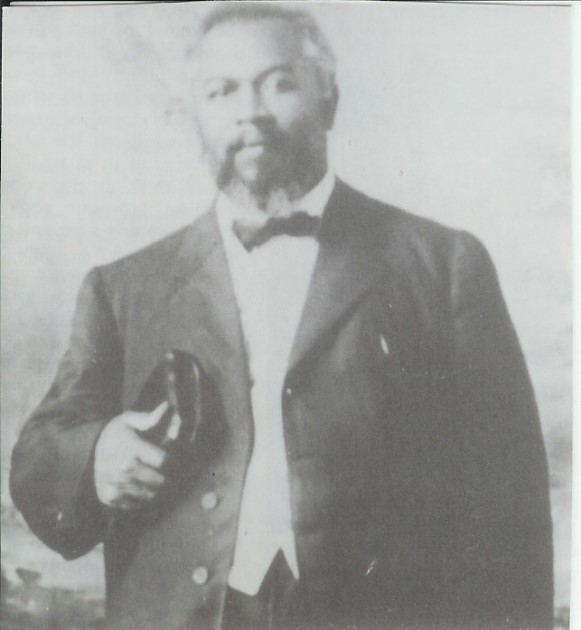|

Bishop William J. Seymour
Probably the most recognized individual to attend the Bible Training School in Houston was William J. Seymour. In the book entitled Charles F. Parham, Sarah Parham (the wife of the noted evangelist) wrote on page (137) the following discourse concerning Seymour, "One colored man, William J. Seymour, became a regular attendant each day for the Bible lessons. In Texas, you know, the colored people are not allowed to mix with the white people as they do in some of the other states; but he was so humble and so deeply interested in the study of the word that Brother Parham could not refuse him. So he was given a place in the class and eagerly drank in the truths which were so new to him and found for his hungry soul."
As part of the purpose of this project, we are attempting to give a correct analogy of the facts. While some historians are writing a different story concerning Seymour being constrained to the hallway and not allowed to enter into the class with the other students, this story has never before been written about with such clarity concerning the facts from those who were present. A second confirmation of this story comes from the late Howard Goss, who writes on page (73) in his book entitled, The Winds of God. "A negro Baptist preacher from Houston was selected - a Brother Seymour, who had often attended the morning session of the school..." A third confrmation comes from a lecture given by Rev. Pauline Parham (Charles Parham's daughter-in-law) in 1989. She states that William Seymour humbly asked Bro. Parham if he could sit outside and take in the lessons, but that Bro. Parham gave him a place in the class-room with the other students to learn the truths about the Pentecostal message. A fourth confirmation comes from, The Apostolic Faith Report dated, May, 1921. It states on page (5) "For the benefit of many who have been misled, we'll right here drop a word that our readers may fully understand the matter thouroughly. In this training school in the city of Houston, Texas, one negro man by the name of Seymour, became a regular attendant, taking his seat in the classes: and it was here that he gained the full knowledge of the Full Gospel message."
If the Jim Crow laws of the south were so manifestly enforced, until William Seymour was not allowed into the classroom with the white student, maybe it would be responsible for us to ask why he was allowed into the building period, seeing that all the other students were white. This seems to be historically unbalanced with the keeping of the laws of that day. However you may view Parham's response to Seymour, there are at least (4) historical eyewitness accounts that place him diametrically in the class with the other students soaking up the biblical truths of the Apostolic faith.
Although Brother Seymour never received the baptism of the Holy Ghost while under Parham's mentorship, he nevertheless accepted it as part of the restored power to the church. Brother Parham's desire was that Seymour would reach the black community in Houston with the Pentecostal message, however, when a black woman named Neely Terry visited Houston, she became impressed with Brother Seymour, and requested that he come to Los Angeles and assume the pastorate of the small church that she attended. After conferring with Parham about going to California, arrangements were made, and early in the spring of 1906, Parham collected enough train fare to send Seymour on his way to Los Angeles.
The Los Angeles which Seymour entered was a bustling city, which at that time was in a boom that would taper off in the years following the Panic of 1907, only to be resumed by 1910. It was the fastest growing city in the nation from 1880 to 1910. Los Angeles had doubled its population in the 1890's, and more than tripled it in the next decade. The sprawling, residential character of the city reflected the rural, anti-urban sentiments of its inhabitants. And while industrial growth was even then eroding the rustic aspects of the city, the frontier ethos was still strong, and would linger on well into the future. As 1906 drew near, Los Angeles was ripe for a spiritual awakening. Several churches in the area had been praying for a revisiting of the first century Pentecost.
When Seymour preached his first sermon at the Holiness Church on Santa Fe Street, he took as his text Acts 2:4, and declared that speaking in tongues was the Bible evidence of receiving the Baptism of the Holy Ghost, although he had not yet received the impartation him self. After consulting with J.M. Roberts, the President of the Southern California Holiness Association, Mrs. Julia Hutchins the pastor felt that this teaching was contrary to accepted holiness views, and the following night she padlocked the church door to keep Seymour out, even though most of her members had accepted his message. With nowhere to stay in the city, and no money for lodging, Seymour was invited to stay at the home of Richard and Ruth Asberry. Seymour began holding cottage prayer meetings and Bible studies in the living room of the Asberry home located at 214 Bonnie Brae Street.
|